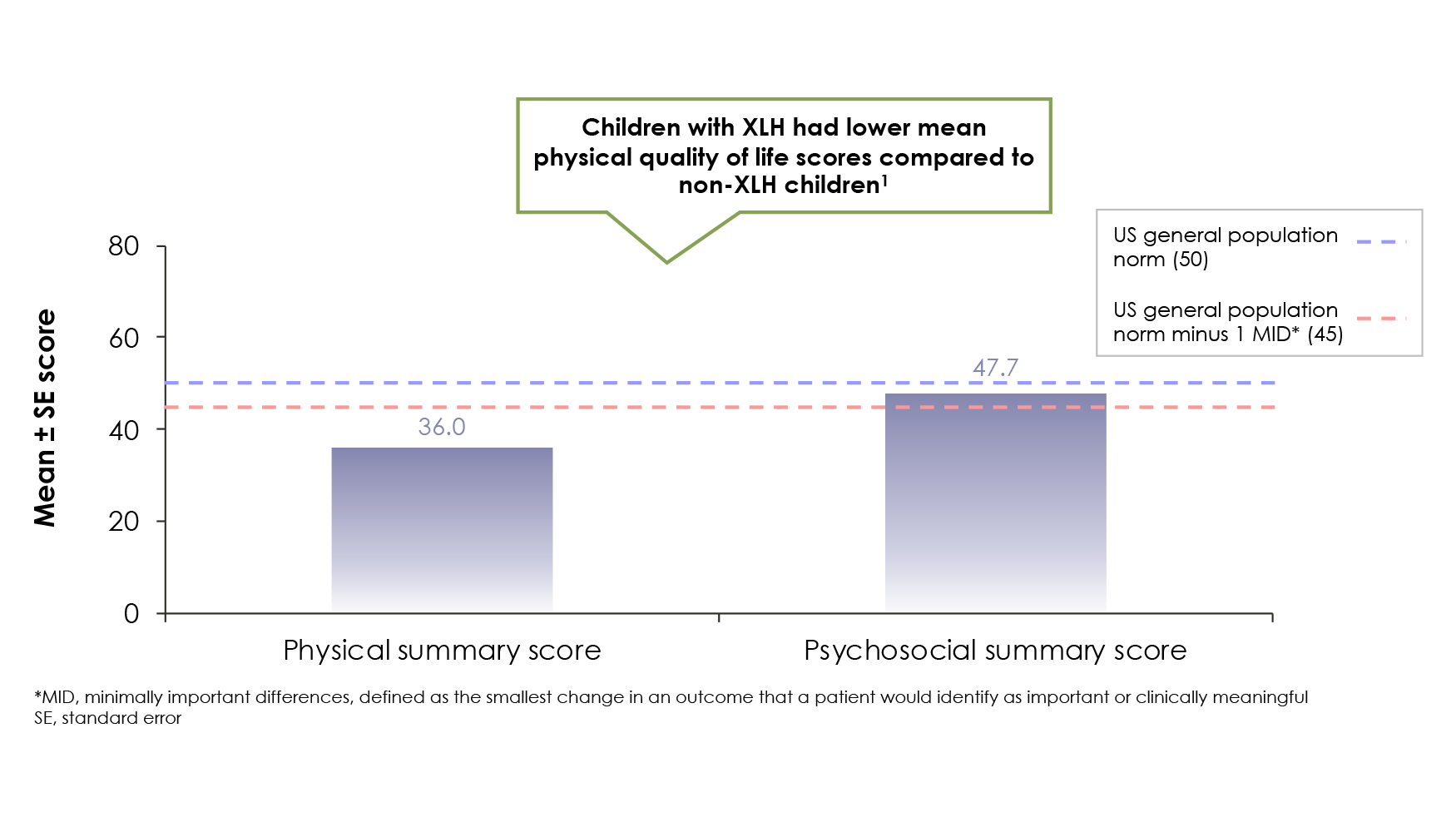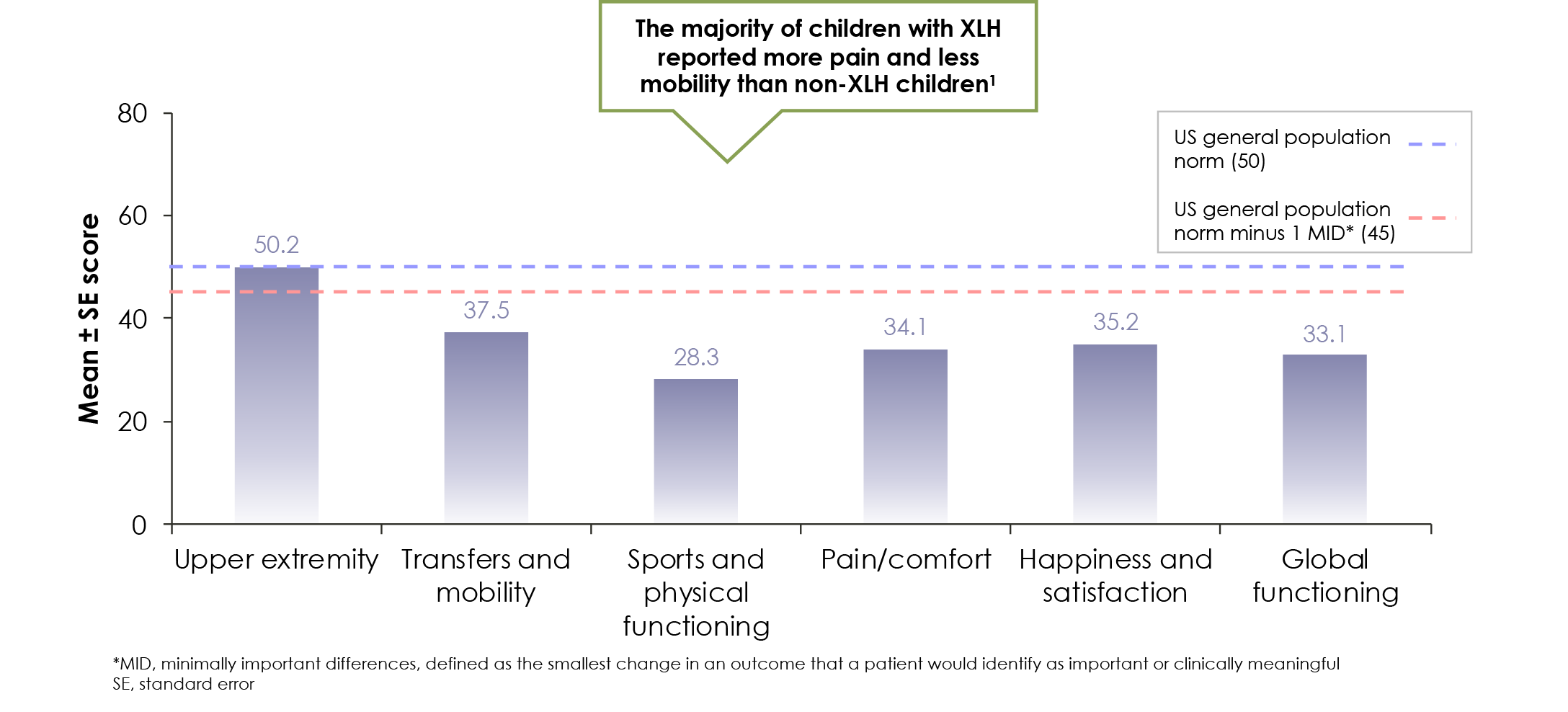소아 XLH 환자의 임상 증상
XLH는 평생 동안 골격계 질환을 초래하고, 신체 기능과 삶의 질을 급격히 저하시킵니다.1
XLH는 대개 첫 2년 동안은 진행성 하지 휨이나 외반슬, 체중 부하가 나타난 후 성장 지연 및 구루병의 특징적인 임상 징후로 나타납니다. 통증, 보행 장애 및 대동작 기능 저하도 관찰될 수 있습니다2,3
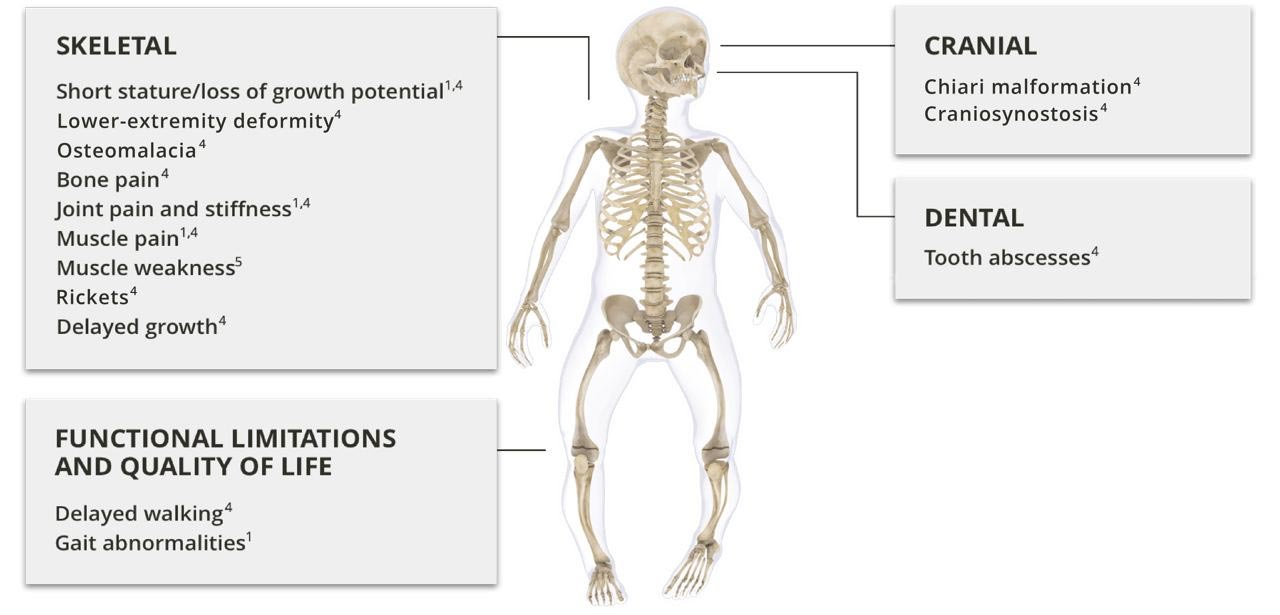
소아 XLH 환자는 삶의 질 저하, 이동성 저하, 뼈통증 및 관절통을 앓고 있습니다.1
소아 XLH 환자는 골격 질환과 성장 지연 이외에 치아 증상도 나타날 수 있습니다.1,4
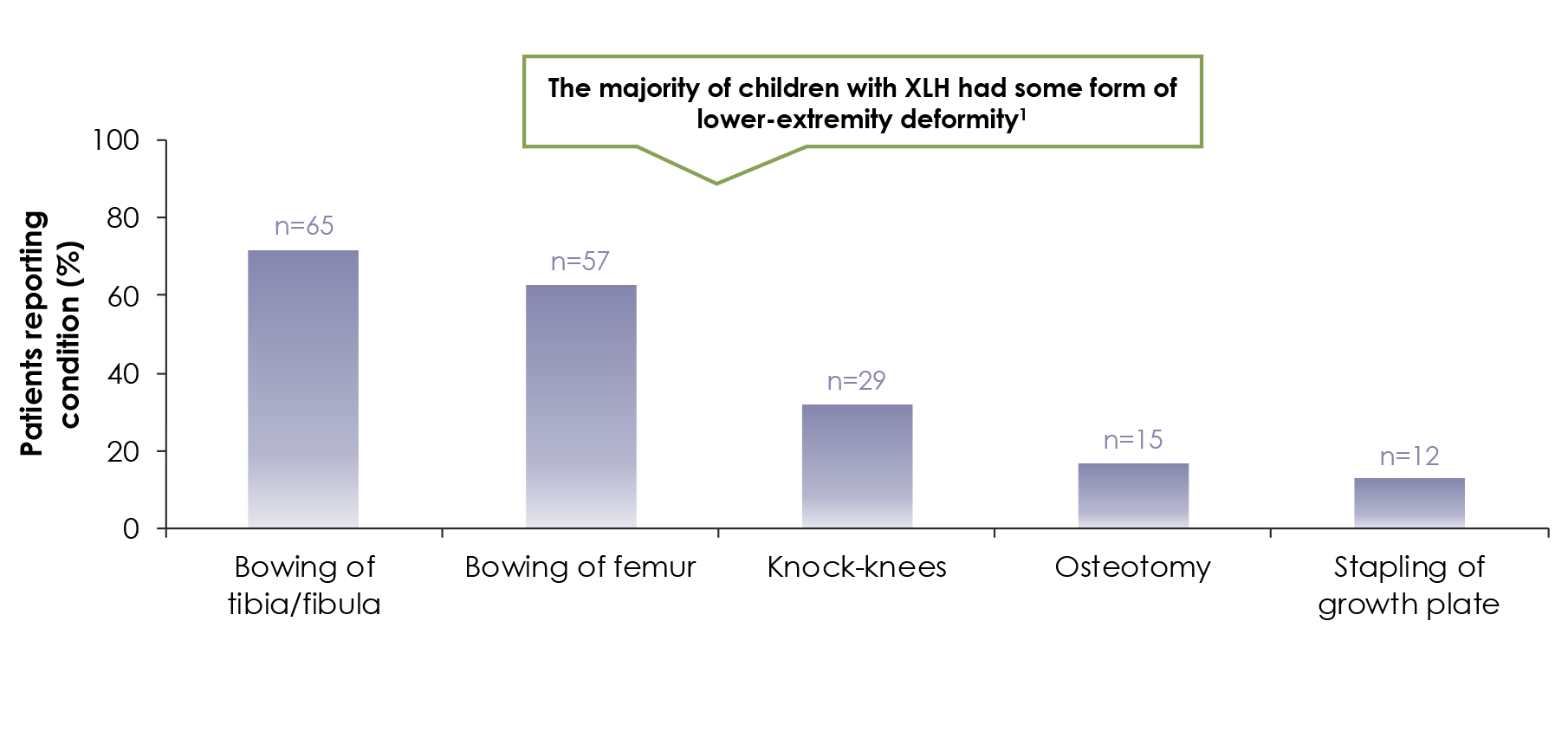
성장
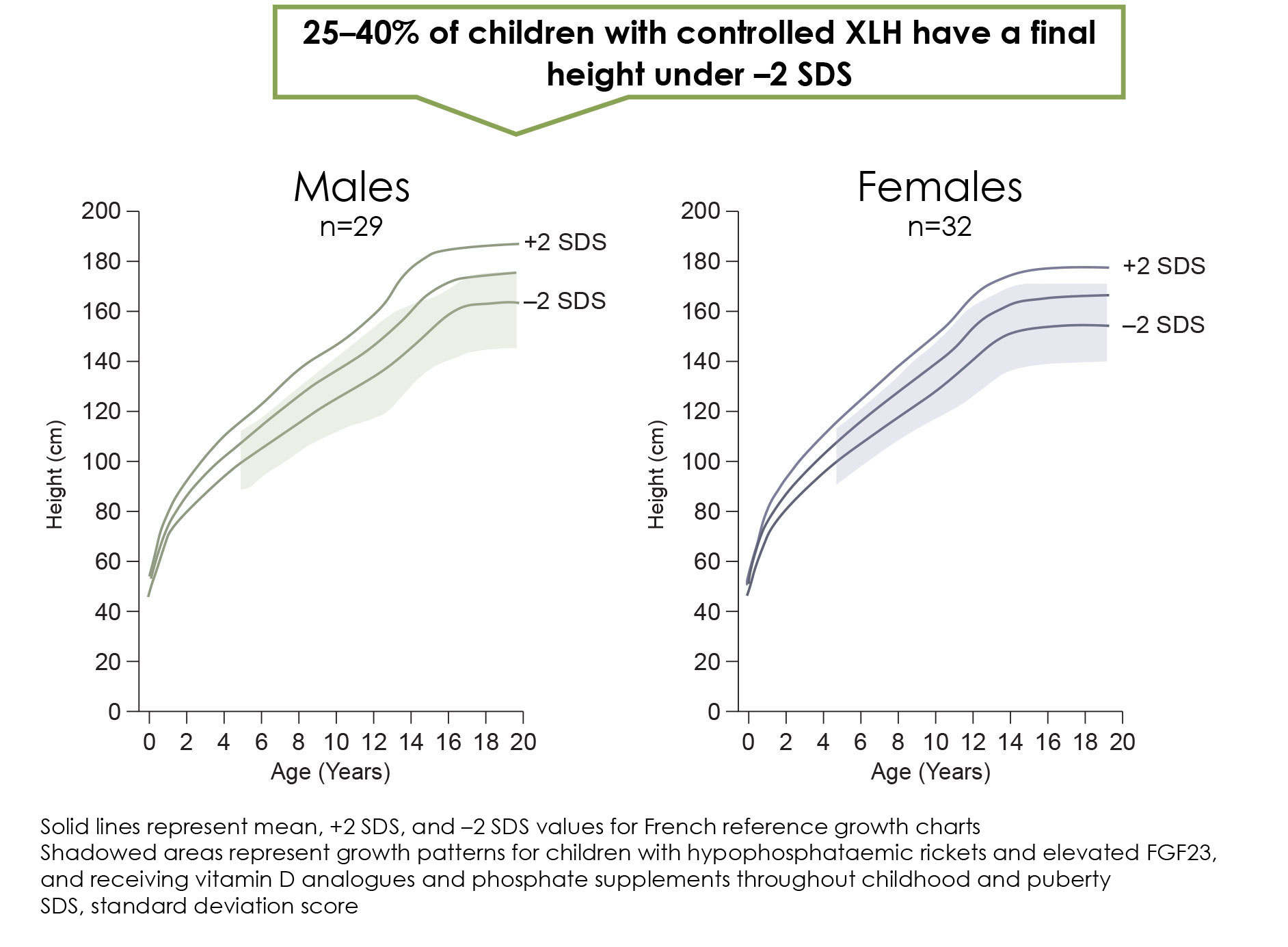

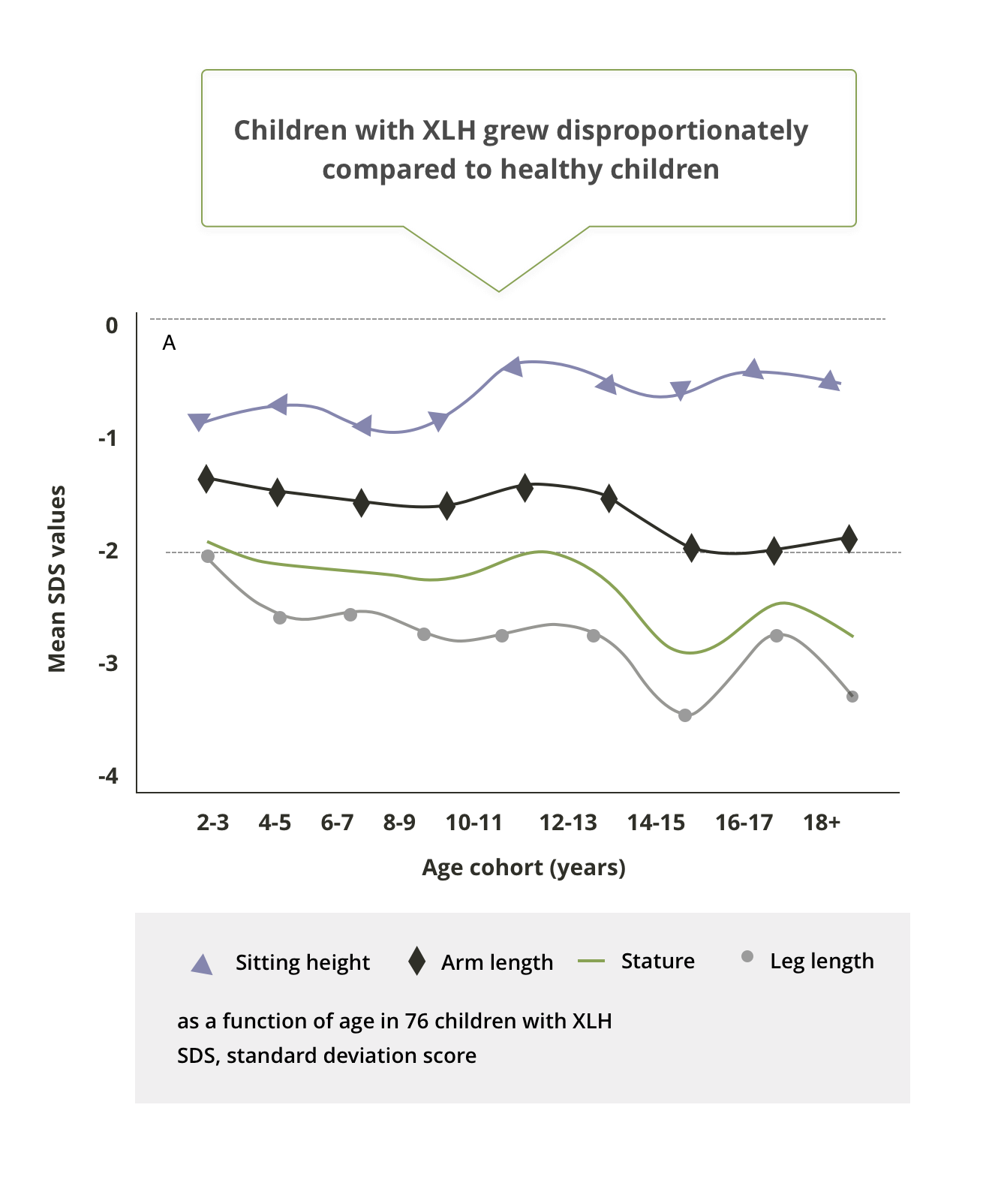
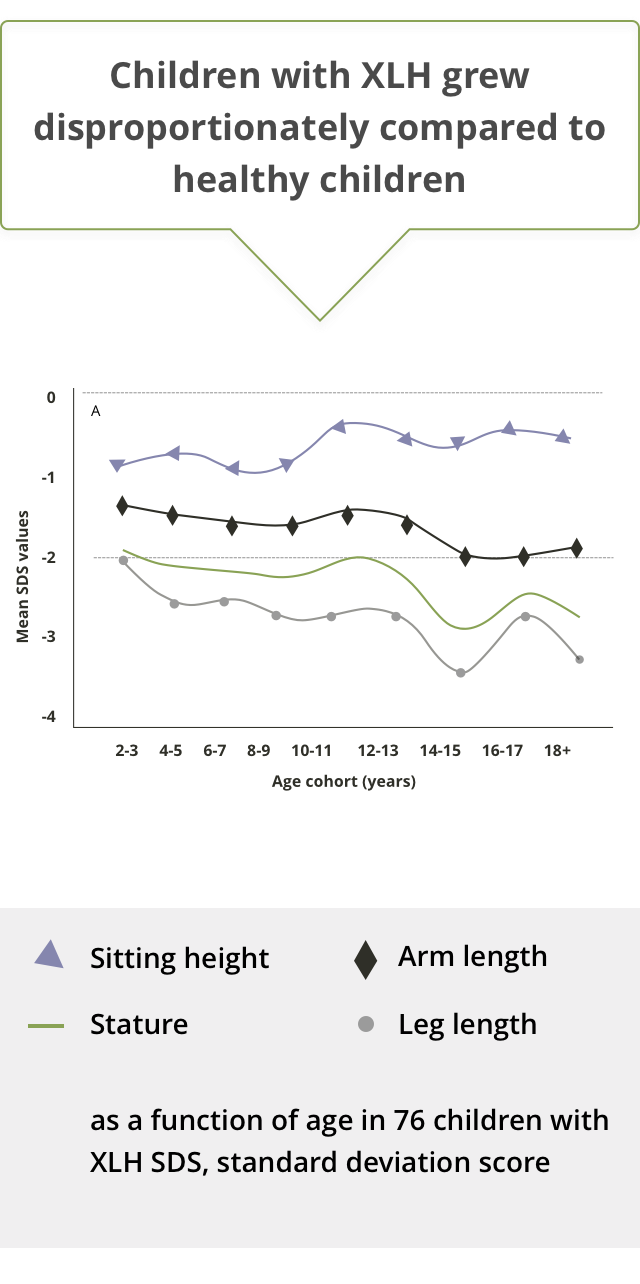
소아 XLH 환자에서 선형 신체 치수가 모든 연령의 정상 소아에 비해 유의하게 감소되어, 신장 및 다리 길이와 깊은 연관성이 있습니다.10
일반적으로, 다리길이는 아동기와 청소년기 동안 점차적으로 감소하고, 반면에 앉은 키는 아동기 후반에 유의하게 증가합니다.10
치아 증상
XLH 환자는 유치와 영구치 모두에서 치아 농양이 발생할 수 있습니다. 이 질환으로 인해 치아 외부의 장벽이 감소되어, 얇은 에나멜에 균열이 생기고, 치수각이 길어지며, 상아질이 비정상적으로 형성되어, 눈에 보이는 치아 손상 없이 세균과 감염이 치관강 내로 침입하게 됩니다.4,11
90명의 0-18세 소아 XLH 환자의 부모/간병인을 대상으로 한 해외 온라인 조사에 따르면, 소아 중 51%가 치아 농양이 있는 것으로 나타났습니다.1
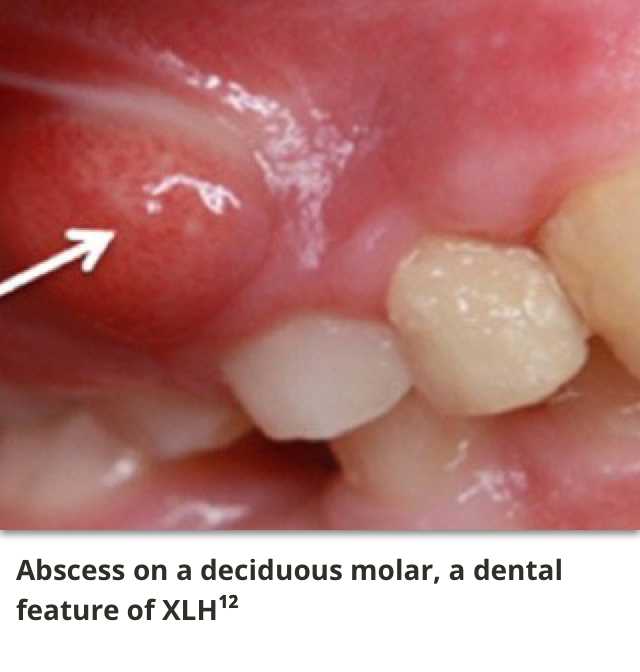
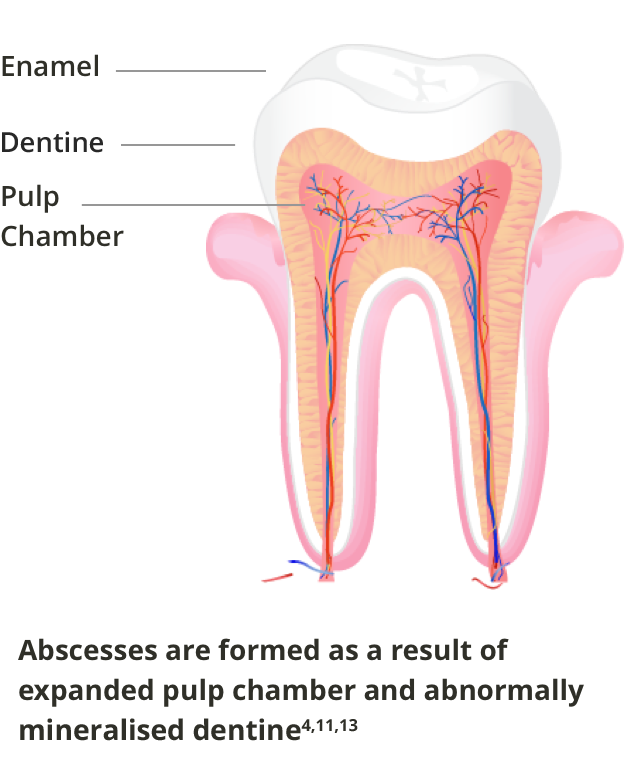
소아 XLH 환자는 이동성 감소와 기능상 제한을 경험할 수 있습니다.4
소아 XLH 환자는 정상 소아(XLH가 아닌)에 비해 하지 근력 및 보행 능력이 현저하게 감소됩니다.5
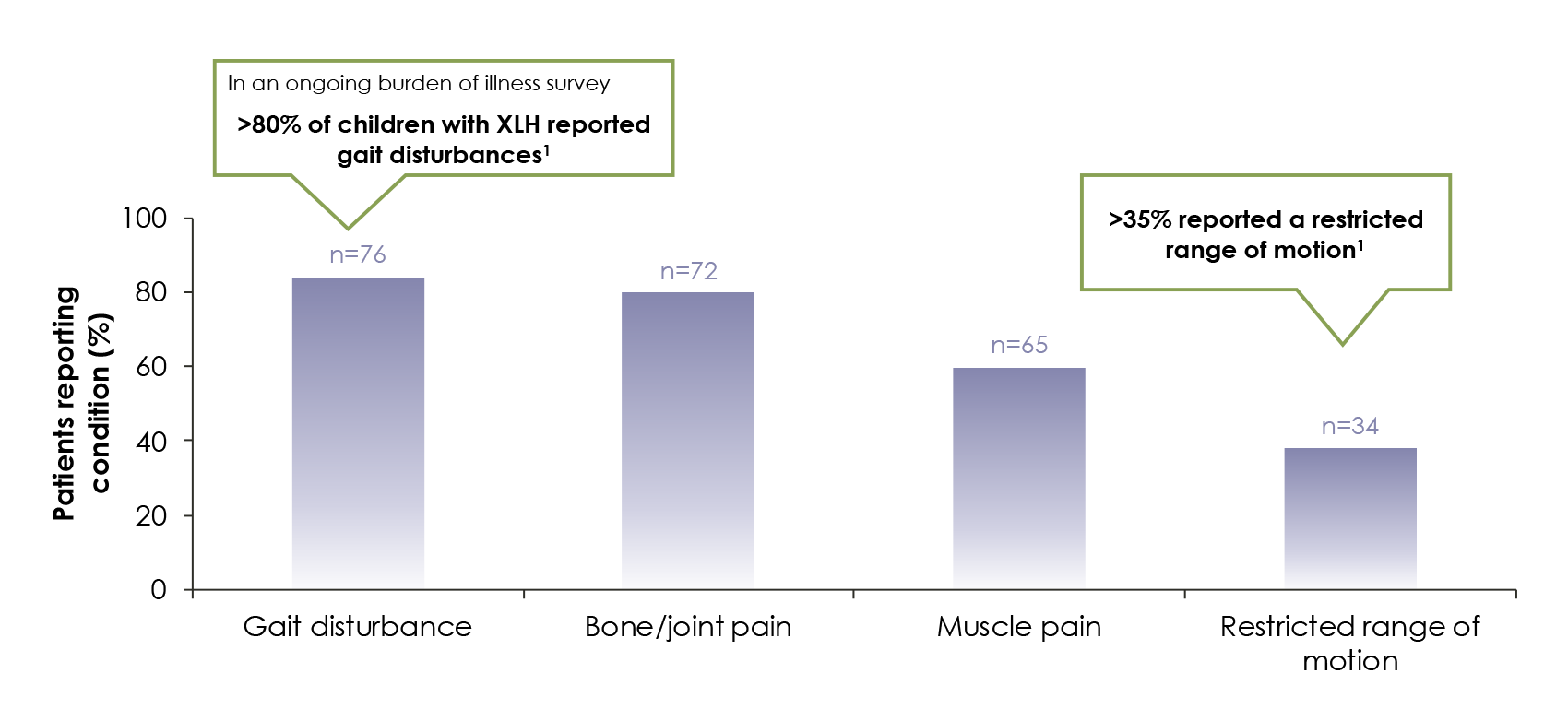
소아 XLH 환자는 삶의 질(QOL)이 저하될 수 있습니다.1
소아 환자에서 XLH의 골격 증상이 신체적 그리고 심리사회적 삶의 질에 영향을 미칩니다.1
이 외에도 많은 소아 XLH 환자가 정기적인 관절통을 겪습니다1
소아 XLH 환자 중 55% 가 넘는 환자가 무릎 통증을 호소합니다. 통증은 일반적으로 다음 다음 부위에서 나타납니다.1
- 발
- 엉덩이
- 발목
